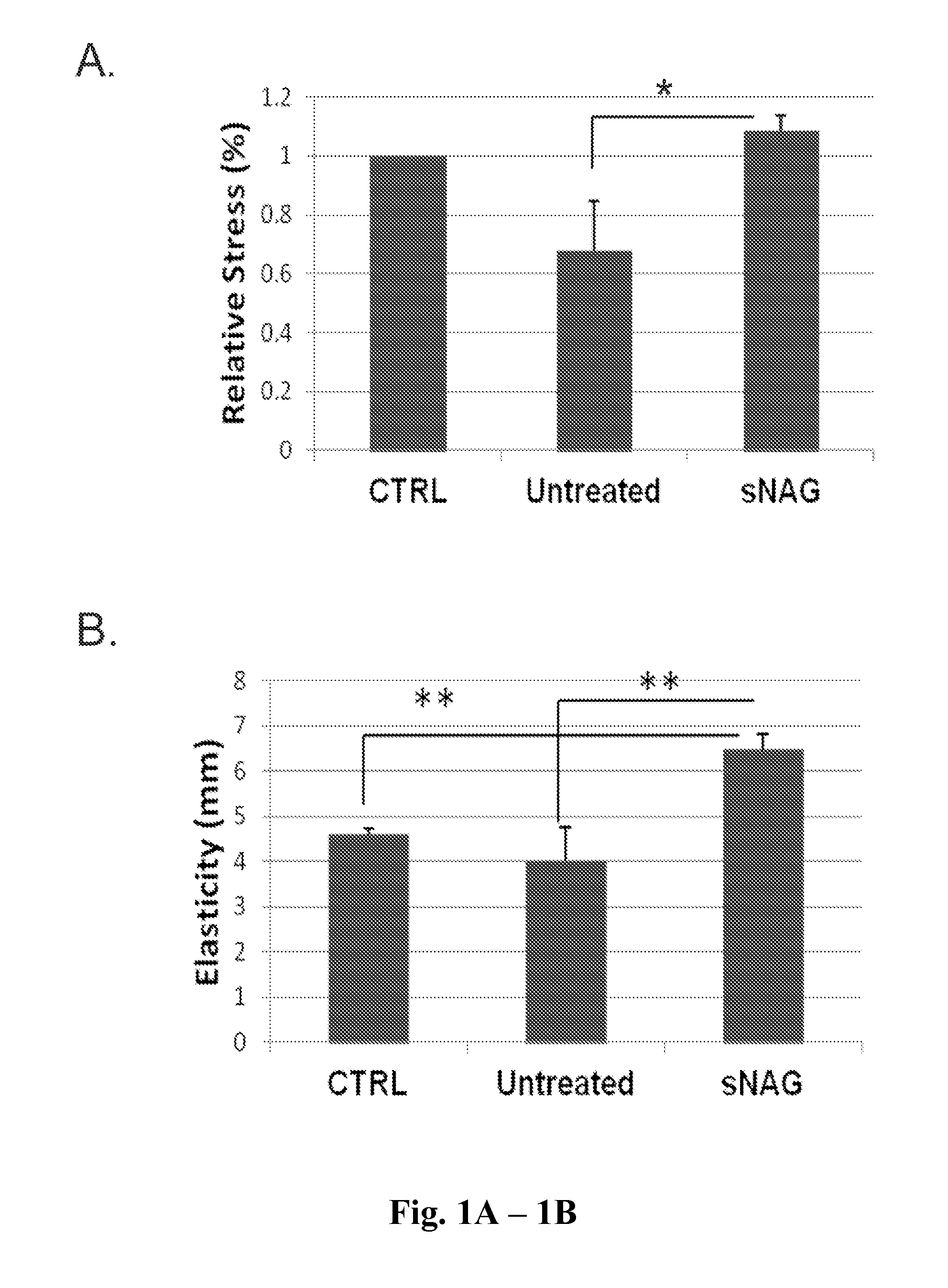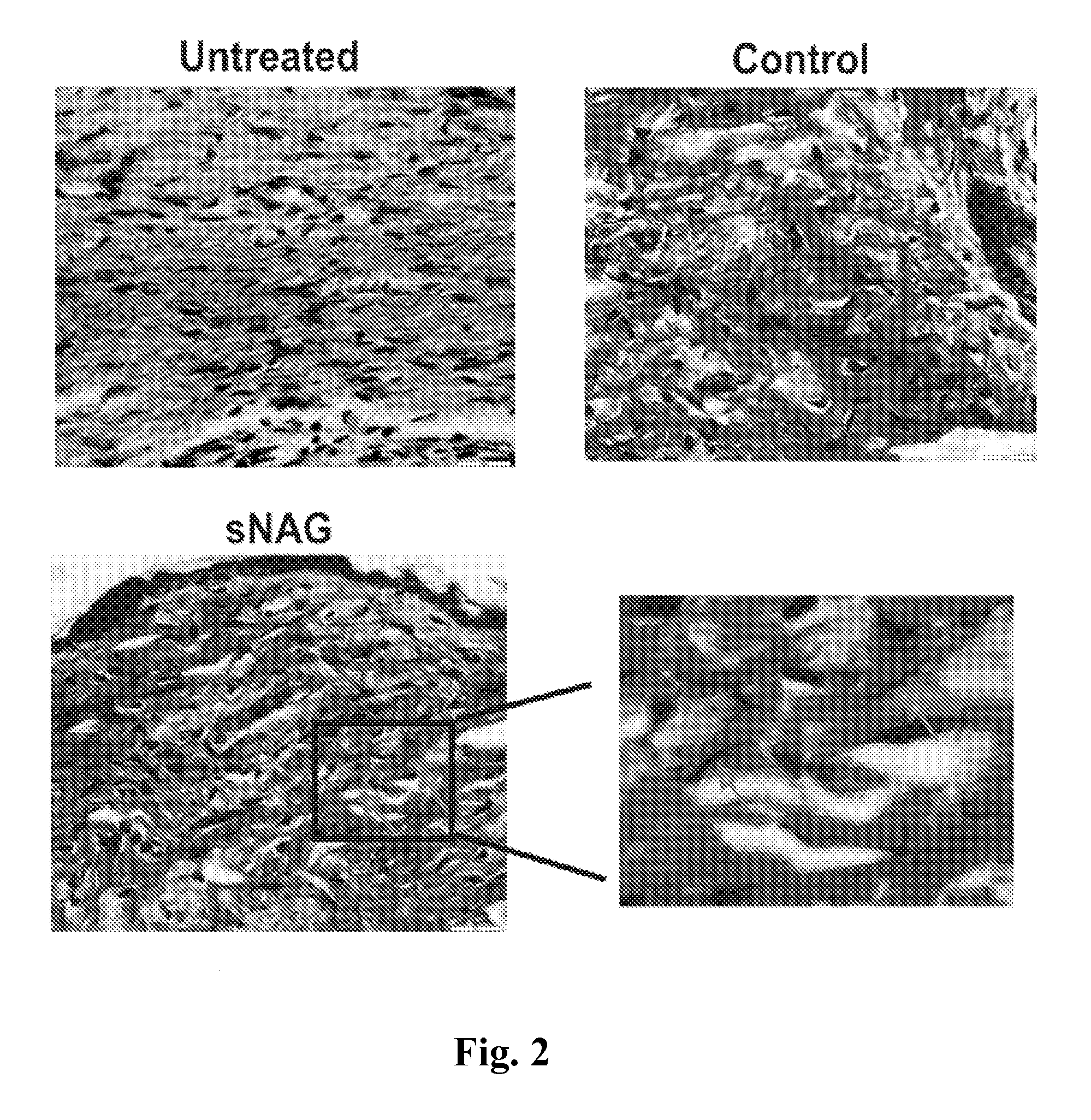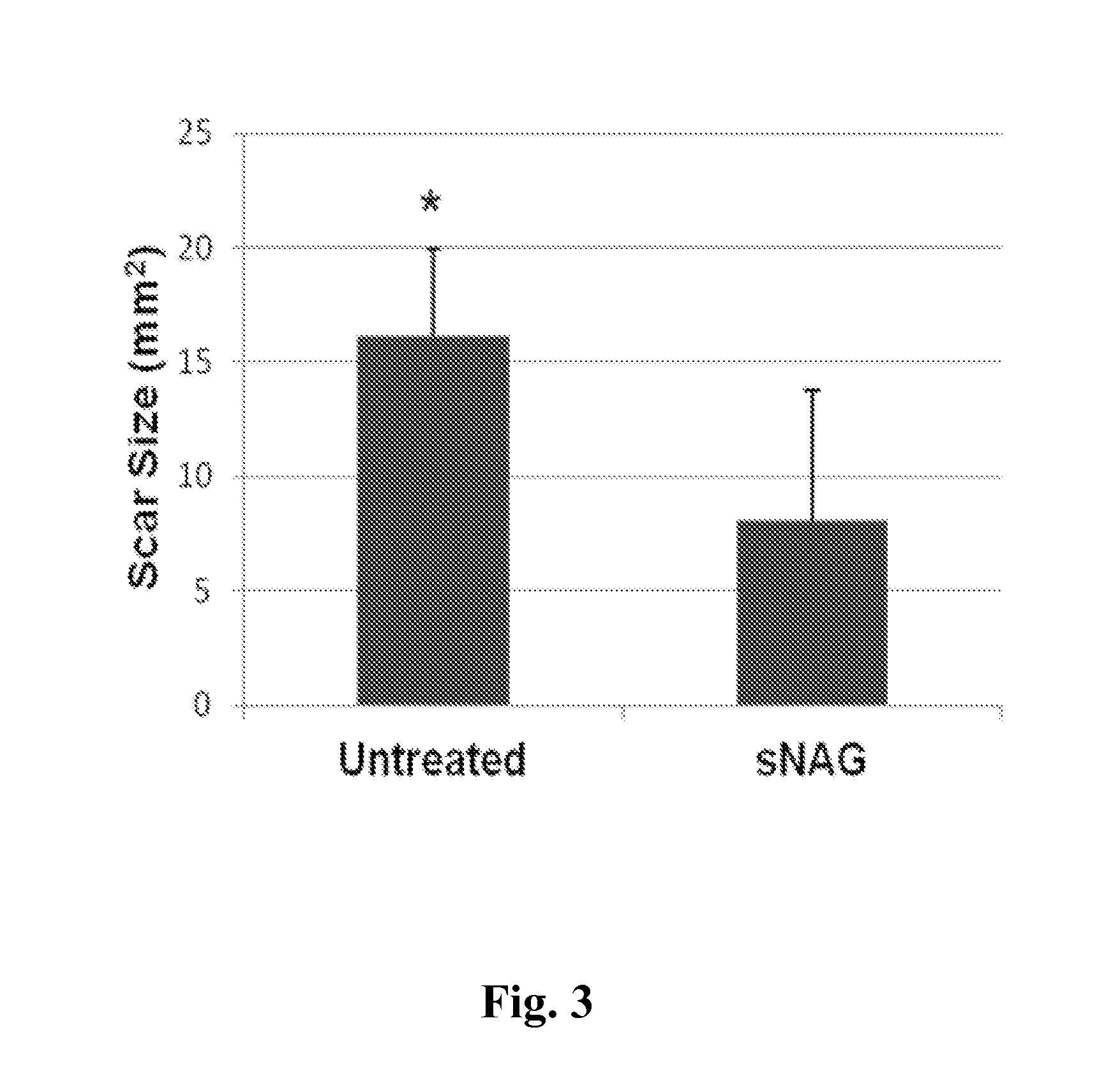Treatment of disease with poly-n-acetylglucosamine nanofibers
- Summary
- Abstract
- Description
- Claims
- Application Information
AI Technical Summary
Benefits of technology
Problems solved by technology
Method used
Image
Examples
example 1
6.1 Example 1
sNAG Nanofibers Increase Tensile Strength and Elasticity of Tissue
[0205]This example shows that sNAG nanofibers increase tensile strength and elasticity of tissue. In particular, this example demonstrates that cutaneous wounds treated with sNAG nanofibers exhibited tensile strength similar to that of unwounded tissue. This example further demonstrates that treatment of cutaneous wounds with sNAG nanofibers increased elasticity of tissue as compared to both untreated cutaneous wounds and unwounded control skin.
Materials and Methods
[0206]Eight adult male wild type C57Bl / 6 mice between 8-12 weeks were used in the experiment. Four mice were left unwounded during the 21 days as the control group (a representative sample of normal unwounded skin from wild type mice) and four animals were the experimental group. In the experimental group (four mice) hair was removed by depilation and the area was washed and sterilized using 70% ethanol. Mice in the experimental group were anes...
example 2
6.2 Example 2
sNAG Nanofibers Increase Elastin Production in Tissue
[0209]This example shows that sNAG nanofibers increase elastin production. In particular, this example demonstrates that cutaneous wounds treated with sNAG nanofibers exhibited elastin production whereas untreated wounds did not.
Materials and Methods
[0210]Four adult male wild type C57Bl / 6 mice between 8-12 weeks were used in the experiment. The hair was removed by depilation and the area was washed and sterilized using 70% ethanol. Mice were anesthetized using an O2 / Isoflurane vaporizing anesthesia machine (VetEquip, Inc.). Isoflurane was used at 4% for induction; 2% for surgery. Two full thickness cutaneous wounds were created using a 4 mm biopsy punch (Miltex), to create two identical wounds on each flank. One flank was treated with a thin sNAG membrane (Marine Polymer Technologies, Inc.) moistened with distilled water or the other flank was left untreated. The wound sites were covered with a polyurethane transparen...
example 3
6.3 Example 3
sNAG Nanofibers Reduce Scarring of Tissue
[0213]This example shows that sNAG nanofibers decrease scarring of tissue. In particular, this example demonstrates that cutaneous wounds treated with sNAG nanofibers exhibited approximately 2-fold reduction in scar size as compared to untreated wounds.
Materials and Methods
[0214]Five adult male wild type C57Bl / 6 mice between 8-12 weeks were used in the experiment. The hair was removed by depilation and the area was washed and sterilized using 70% ethanol. Mice were anesthetized using an O2 / Isoflurane vaporizing anesthesia machine (VetEquip, Inc.). Isoflurane was used at 4% for induction; 2% for surgery. Two full thickness cutaneous wounds were created using a 4 mm biopsy punch (Miltex), to create two identical wounds on each flank. One flank was treated with a thin sNAG membrane (Marine Polymer Technologies, Inc.) moistened with distilled water or the other flank was left untreated. The wound sites were covered with a polyurethan...
PUM
| Property | Measurement | Unit |
|---|---|---|
| Length | aaaaa | aaaaa |
| Length | aaaaa | aaaaa |
| Length | aaaaa | aaaaa |
Abstract
Description
Claims
Application Information
 Login to View More
Login to View More - R&D
- Intellectual Property
- Life Sciences
- Materials
- Tech Scout
- Unparalleled Data Quality
- Higher Quality Content
- 60% Fewer Hallucinations
Browse by: Latest US Patents, China's latest patents, Technical Efficacy Thesaurus, Application Domain, Technology Topic, Popular Technical Reports.
© 2025 PatSnap. All rights reserved.Legal|Privacy policy|Modern Slavery Act Transparency Statement|Sitemap|About US| Contact US: help@patsnap.com



